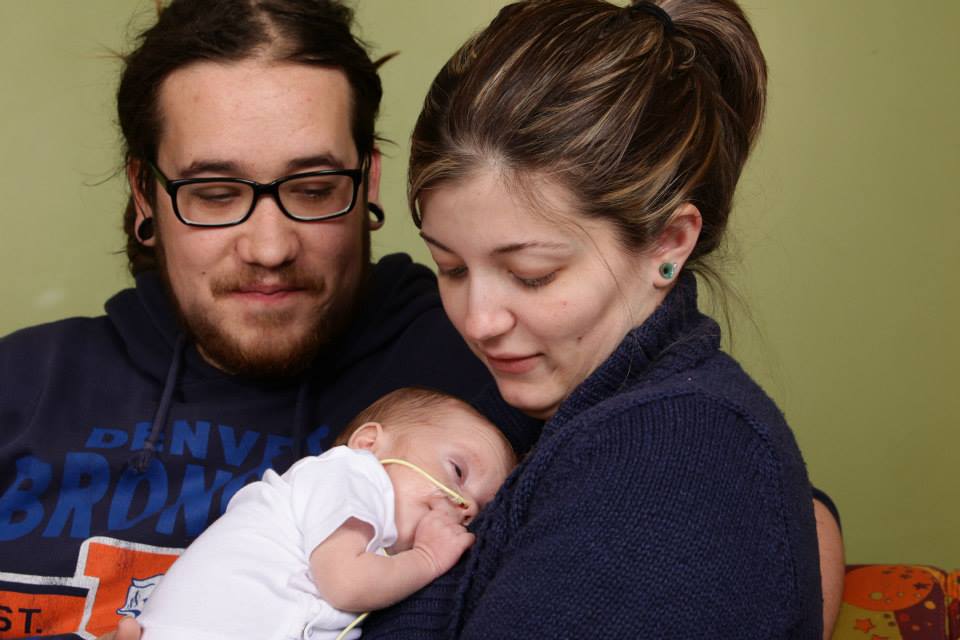Some couples claim it was love at first sight.
Emily and Jon Bannon are not one of those couples.
While attending Northern Arizona University, Emily worked at Ardrey Memorial Auditorium—the university’s largest performing arts center, where various events are held. Each year, Flagstaff Arts and Leadership Academy rents the facility for their high school graduation. Emily was scheduled to work the graduation, Jon was scheduled to graduate.
“I remember seeing one of the graduates wearing a bandana around his head and sunglasses inside, and I remember thinking, ‘What a tool!’”
Little did she know, that “tool” would become her husband.
After graduating from high school and enrolling in NAU, Jon—who shared Emily’s passion for the arts—also got a job working at Ardrey. The two rarely shared the same shifts, and for the duration of their time at NAU, were acquaintances at best.
Then, in 2008, Emily graduated with a bachelor’s degree in English and left her student job.
She had always loved kids, and when the opportunity to take a job as a nanny presented itself, she jumped at the chance. The job kept Emily busy and often required she take long trips with the family abroad. Rarely home, she couldn’t justify spending money on rent, so instead, she couch-surfed her way through summer.
She got an invitation from a close friend to stay on her couch, and Emily, basically homeless, took her friend up on it. As luck would have it, the inside-sunglass-wearing-tool was her friend’s roommate that she had heard so much about. Jon and Emily started spending time together and clicked instantly.
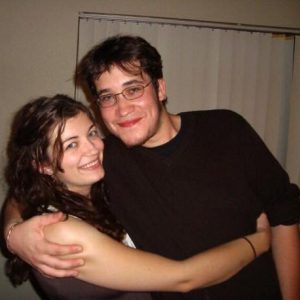
Working as a nanny only helped solidify Emily’s desire to be a mom.
“I was playing with Ella after dinner one night and her dad looked at me and said, ‘You know, for a lot of people, it doesn’t matter if they have kids or not, but it would really be a shame if you don’t have kids someday.’ Ella’s mom agreed, and I did my best not to cry because I was so touched by that.”
Jon and Emily knew they wanted to have kids, but weren’t in any rush. Two years into marriage, they found out they were unexpectedly expecting. Ten weeks later, Emily miscarried.
“Although the experience was really emotionally painful, that loss made us realize not only how much we wanted to have a baby, but that we were ready for one. Six months later, on June 1, 2013, we found out I was pregnant with Max.”
This time, Emily made it past the 12-week mark of pregnancy, and the risk of miscarriage significantly dropped. They thought they were in the clear.
At their standard 20-week check-up to find out the sex of the baby, the ultrasound technician saw something that concerned her: She couldn’t see all four chambers of the baby’s heart. She was sure it was due to how active he was in Emily’s womb, but nonetheless, she recommended the Bannons see a fetal cardiologist as a precaution.
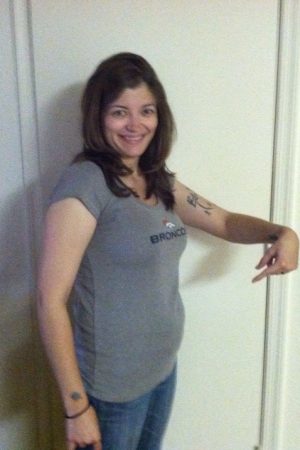
Emily and Jon weren’t worried but scheduled an appointment just to be safe.
After a second ultrasound and some tests by the fetal cardiologist, Emily and Jon received the news no expectant parent ever wants to hear—the baby had a congenital heart defect called Hypoplastic Left Heart Syndrome (HLHS), meaning the left side of his heart wasn’t growing. If Max survived to birth—a big “if” at this point—he would need multiple surgeries to reroute his heart.
“I remember lying in bed and holding my stomach, feeling Max kick and roll inside me, and feeling like I’d failed him by giving him only half of a heart. Had I done something wrong? Did I eat the wrong thing, do the wrong prenatal yoga pose, work in the wrong job?”
In the last 30 years, there have been three cases of this heart disease in northern Arizona, including Max’s, and doctors have yet to figure out the cause. Emily and Jon underwent several rounds of genetic testing in hopes of finding out why Max had HLHS, but there were no answers.
“Shit just happens,” their doctor said with a hopeless shrug.
As Emily got further along in her pregnancy, Max’s condition worsened. Six months in, the doctor told the Bannons that Max had a severe tricuspid valve regurgitation—blood was backflowing so badly that the usual three-step surgeries used to treat HLHS were no longer a viable option. The doctor gave Emily and Jon two alternatives: Comfort care to make his short life as painless as possible (without intervention, he’d likely die within the first few days of being born) or transplant. Not wanting to live with regrets knowing they hadn’t tried every possible option, they put Max on the transplant list.
“I ended up being so grateful for how active Max was in utero. He kicked like crazy, all the time.” Emily said. “While I didn’t exactly enjoy him trying to crack my ribs or tap dancing on my bladder, every little movement was a reminder that he was OK and still fighting.”
Despite the odds, Emily carried Max to full-term, allowing him to grow as strong as possible and giving him a fighting chance at survival.
Her C-section was scheduled for Feb. 3, 2014—four days before her due date and one day after the Denver Broncos played the Seattle Seahawks in Super Bowl XLVIII.
To say Emily and Jon are Broncos fans is a gross understatement. They were both grateful to have the Super Bowl to distract them, even if it went down in Broncos history as the worst Super Bowl game of all time. Despite almost putting herself in labor from yelling at the TV, after the game was over and things settled down, the gravity of the situation set in.
“I remember taking a shower that night and staring down at my stomach, my skin shifting as Max rolled beneath. ‘I love you so much,’ I whispered—my tears mixing with the water of the shower.”
Emily and Jon showed up at the hospital first thing the next morning. After filling out a mountain of paperwork and putting on scrubs and hairnets, Emily was wheeled into surgery, hand-in-hand with her husband.
“In the movies, you see C-sections done with a large curtain hanging between the mother’s face and her dissected body. I am here to tell you that that is a filthy lie. There was a curtain of sorts, but it was more of a splash guard at best and if I’d picked up my neck, I’d have been able to see over it. Also, there was a FREAKING MIRROR on the ceiling and I did my best not to look at it because … well, no one needs to see what their liver looks like. Jon, however, had a very different view. Without even a splash guard to protect his vision, he learned that a C-section involves pulling out intestines and piling them on a nearby table in order to safely reach the uterus. Suddenly, peeing with the bathroom door open didn’t seem like a big deal.”
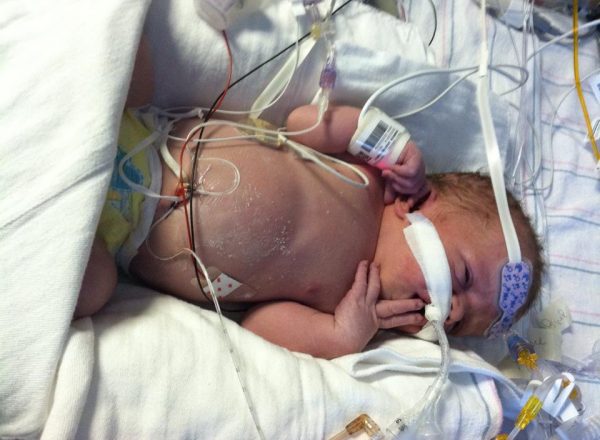
The doctors were able to successfully deliver 6.7-pound Max. Before the nurse whisked him away to the Neonatal Intensive Care Unit, she brought him over to Emily. His mother gave him a kiss as tears streamed down her face.
The next few days were rough for mother and son.
Max was transferred to Phoenix Children’s Hospital while Emily was left recovering at St. Joseph’s hospital—forcing Jon to split his time between the two.
“Without Max, I felt like I was missing a limb and it was so painful and frustrating to be stuck in a hospital bed watching ‘Seinfeld’ reruns when my son wasn’t with me. All I could do was work as hard as I could to make myself mobile so I could be discharged and go be with him.”
Despite knowing she could benefit from another day or two recovering in the hospital, the doctors and nurses could see how miserable Emily was without her son. With the promise that she’d take it easy, they released her. The Bannon family was reunited, though not yet home.
Max was hooked up to dozens of machines, and Emily and Jon had to fight their way through cords and wires just to touch his small, fragile body. Holding him in this vulnerable state was out of the question.
On Feb. 5, Max was put on the heart transplant list—all that was left to do was wait. For a pediatric heart transplant, the wait time was between two and three years. Emily and Jon refused to acknowledge that Max didn’t have that long.
On Feb. 7, Emily and Jon received the last piece of news they ever expected to hear: they found Max a new heart.
“I immediately started sobbing. I couldn’t believe this was actually happening, and so soon. No one ever gets a heart this fast. When I finally started to get myself together so Dr. Pophal could tell us more about the next steps, I realized he’d started crying, too.”
The day of Max’s surgery, he was not doing well. His body was falling apart and he was inching closer and closer to kidney failure. The nurses tracked his renal numbers on a monitor and the tiniest bit of stimulation caused the numbers to drop dangerously low, so much so that Jon and Emily weren’t allowed to be near Max because it was too much for him. Everyone tried not to get the Bannons’ hopes up—transplants fall through all the time, and Max’s condition was not helping the odds. But as Emily watched Max’s numbers fall, she kept telling herself that this transplant had to happen.
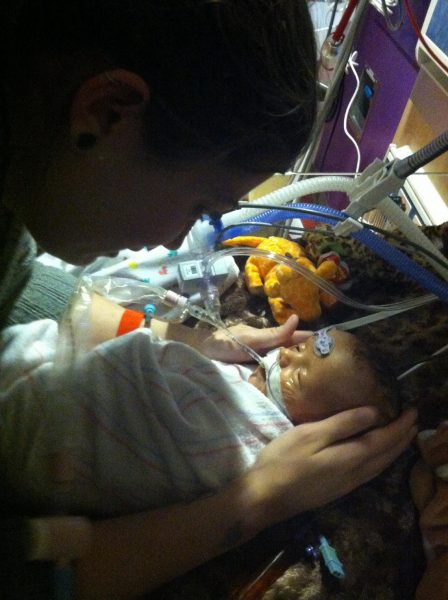
His life literally depended on it.
Max’s numbers began to stabilize and everything seemed to be falling into place. After the heart arrived from Hawaii, Max was whisked into surgery.
“As soon as Max was out of the room, I collapsed into tears—loud, noisy sobs that wracked my whole body. I was terrified that I’d never see my son alive again.”
The eight-hour surgery, in which surgeons had to sew pulmonary veins the size of fishing line, went well. But because the donated heart was older and larger than Max’s, his chest was left open to allow the swelling to go down over the course of the next few days. The plastic wrap that covered his tiny new heart served as its only protection from the outside world.
On Feb. 14, when Max was 11-days-old, Emily was able to hold her son for the first time—the ultimate Valentines Day gift.
His chest cavity was eventually closed. And after more than a month in the hospital, despite several scares (including both of Max’s lungs collapsing), Emily and Jon took their son home.
Today, Max lives the life of a normal 5-year-old—if you don’t count the regular doctor check-ups, the abundance of medical equipment in the Bannon house and the fact that his parents have to be extremely cautious when it comes to germs. After a transplant, the two biggest things to watch out for are organ rejection and infection. Statistically, kids who are transplanted when they are less than a month old deal with less rejection, but infection will always be a concern. A stomach bug that might make other kids feel sick for a few days can—and has—put Max in the hospital. As a result, Emily and Jon have to be extremely conscious about germs: no shoes inside the house; separate outside clothes and inside clothes; the constant washing of hands; and avoiding people who are sick at all costs.
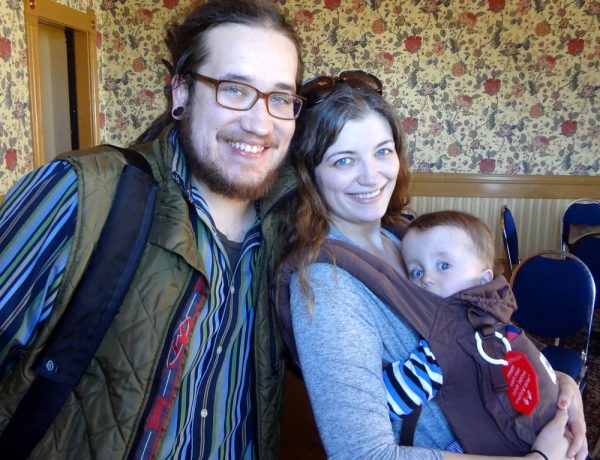
Emily works as a freelance writer and has six books published that range from collections of short stories and historical fiction to humorous essays and post-apocalyptic fiction. Jon is a photographer and marketing manager. Both chose careers that allow them to work from their Flagstaff home so they can be with Max as much as possible.
The Bannons plan to enroll Max in kindergarten next year, but he’ll need some extra assistance. Due to his medical history, in particular, one viral infection he had for most of his first year, he’s delayed in several areas, so he works with speech, occupational and physical therapists. Since kids tend to learn best from their peers, his parents hope that when he is enrolled in school, being around other kids his age can help him progress—as someone who has been in and out of a hospital most of his life, being around large groups of kids his age is completely foreign to him.
For any parent, sending their kid to school for the first time can be emotional, but for Emily and Jon, it’s downright terrifying.
“Anti-vaxxers are our biggest concern,” Emily said. “Due to his transplant and subsequent anti-rejection medication that suppresses his white blood cells so his body won’t attack the heart as a foreign body, Max is unable to receive live vaccines such as the MMR (a vaccine that protects against measles, mumps and rubella). In theory, herd immunity should protect him if the other kids around him are all vaccinated, but idiots who ‘did the research’ on websites that sell coconut oil pose a serious threat to Max, especially considering the measles outbreaks in recent years.”
Emily and Jon were relieved to hear Gov. Doug Ducey announce that he plans to kill any anti-vaccination bill that crosses his desk. Naming Arizona a pro-vaccine state means Max’s parents have one less thing to worry about.
Until he starts school, Max will continue to live out his life’s passions. He loves books, anything electronic, taking photos and playing and listening to music.
“His favorite song is currently ‘Somebody to Love’ by Queen, which I sing to him every night before bed,” Emily said. “Last month, when Max had to go into the hospital for his annual heart catheter and biopsy, Dr. Pophal made sure to play ‘Somebody to Love’ when Max was wheeled into the lab so he wouldn’t be scared.”
Without organ donation, Max wouldn’t be alive today, and Emily and Jon are reminded how grateful they are to their donor’s family every time they look at their son.
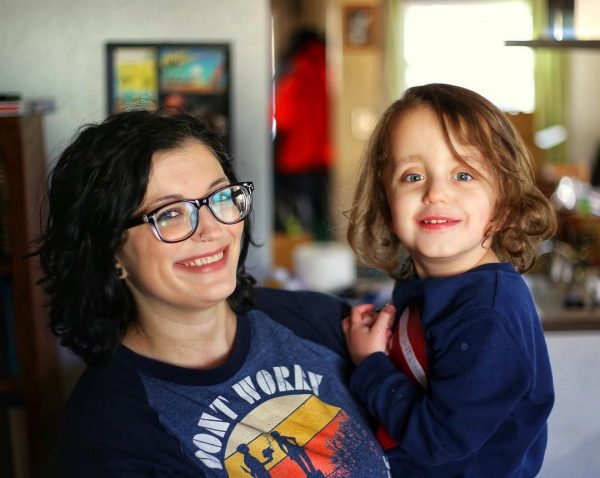
“As the parent of someone who has received an organ donation, I just want to say how incredibly grateful I am to his donor’s family. When faced with the worst situation possible, they chose to be generous and think of others. These complete strangers saved my son’s life which, in turn, saved mine.”
“Max has given my life purpose and he showed me what it really means to be brave, strong, loving and kind,” Jon said. “To see how much joy and happiness he’s brought to people, many of whom he’ll never meet, who have been touched by his story and his courage in his short five years on the planet is nothing short of inspiring. He truly is mighty.”
Undergoing surgery when he was just five days old, Max is the youngest surviving heart transplant patient in the state of Arizona.
For Organ Donation Awareness Month, consider registering to be a donor. Sign up to be an organ donor online.
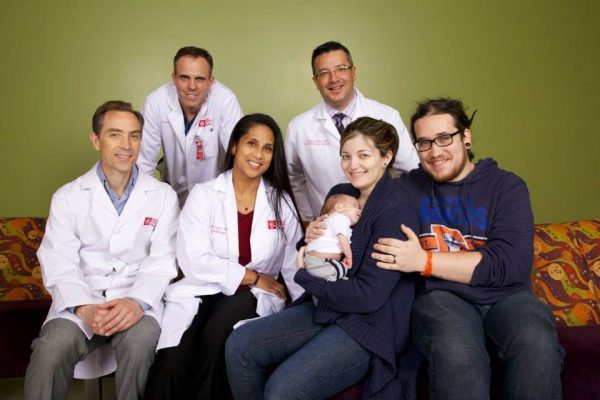
Carly Banks | NAU Communications
(928) 523-5582 | carly.banks@nau.edu
